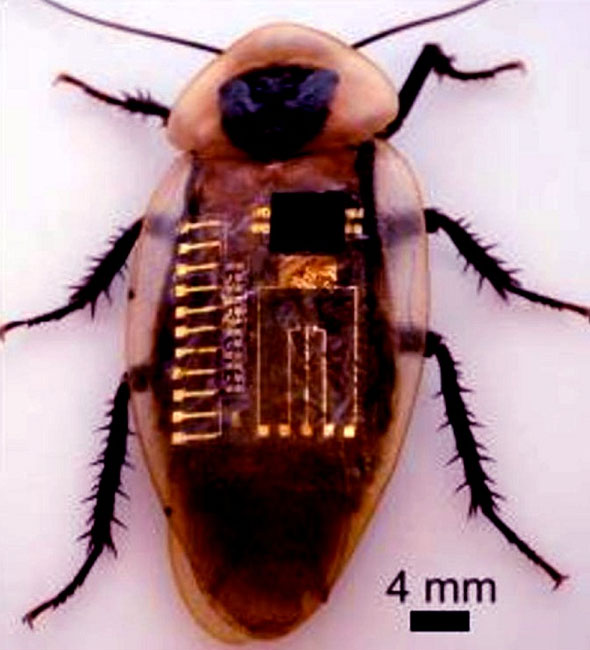The first time 'production' was artificial nerves
For the first time in the world, researchers have simulated the complexity of the human sensory nervous system to create artificial nerves that transmit sensory information.
This good news comes from researchers at Stanford University (USA) and Seoul National University.
According to Assoc. Lee Tae-Woo, this work uses very small but extremely flexible electronic components. When we touch, a sensor cluster will convert this tiny pressure into an electrical signal that moves along electronic neurons to transistors simulated by human neurons.

The artificial nerve is connected to motor nerves where the cockroach leg causes it to contract.
This system of devices can accurately distinguish different sensory levels by identifying pressure points corresponding to different characters as in the system. Even when connected to the motor nerves of a cockroach, only the slightest pressure causes the insect to reflect causing muscle contraction!
Researchers say this artificial nervous system is still improving and in just a few years will make artificial arms and legs feel. Although it is only the first step, the program will continue with the creation of an artificial skin to cover the prosthesis or even cover the robots.

Assoc.Lee Tae-Woo, Seoul National University.
They also note that the skin is a biological system with complexity that is not underestimated, because thanks to interference with the brain, both are involved in detecting perceptions and making processing decisions.
This is good news for those who have to wear prosthetic limbs, because their prosthetic limbs will soon get a sense of touch.
- Electricity production by artificial leaves
- Artificial neurons replace nerves in the human brain
- Artificial leaves produce gasoline
- A way to produce artificial blood has been found on an industrial scale
- Produce oil from artificial plants
- Treat fear with artificial intelligence
- Artificial leaves produce energy from polluted water
- New nerves are developed from fat cells
- Breakthrough in the production of large-scale artificial blood
- Artificial intelligence can predict when you die
- The complete nose is on the arm
- Production of fish spotted by artificial method
 Green tea cleans teeth better than mouthwash?
Green tea cleans teeth better than mouthwash? Death kiss: This is why you should not let anyone kiss your baby's lips
Death kiss: This is why you should not let anyone kiss your baby's lips What is salmonellosis?
What is salmonellosis? Caution should be exercised when using aloe vera through eating and drinking
Caution should be exercised when using aloe vera through eating and drinking